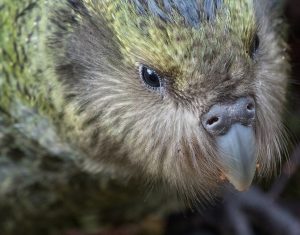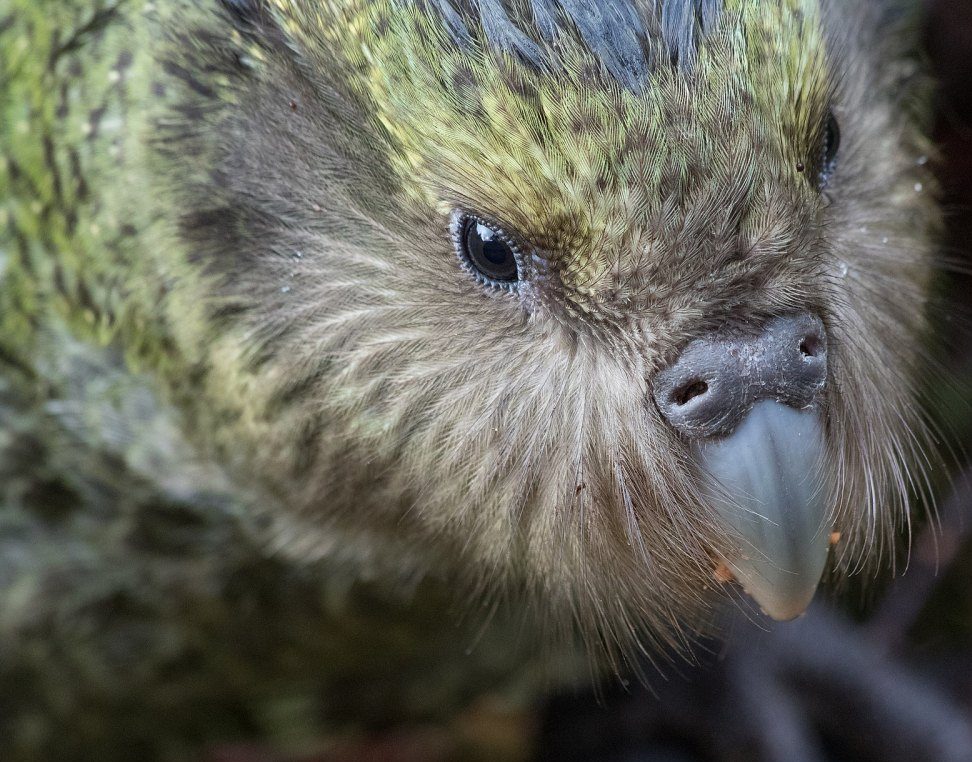 How far would you travel for love? If you were a male kakapo parrot, you’d walk the equivalent of a local 5K, as in, over three miles (and that’s not counting the walk back)! A lovesick male kakapo parrot embarks on his long stroll each night during breeding season as he tries to beat out the competition for a female’s attention. Let’s take a look at the adorable, rotund and flightless parrot with peculiar ways.
How far would you travel for love? If you were a male kakapo parrot, you’d walk the equivalent of a local 5K, as in, over three miles (and that’s not counting the walk back)! A lovesick male kakapo parrot embarks on his long stroll each night during breeding season as he tries to beat out the competition for a female’s attention. Let’s take a look at the adorable, rotund and flightless parrot with peculiar ways.
The kakapo, (Strigops habroptilus) is the heaviest living species of parrot (up to 9 pounds), and its weight and relatively short wings render the parrot flightless. But what kakapos lack in feats of flight they make up for in the ability to adeptly climb tall trees using their big feet and beaks. Their sturdy legs also allow them to safely “parachute down” from trees.
When most parrots walk, they look like their moving on stilted legs. The kakapo, on the other hand, has a jog-like stride. Such an efficient gate comes in handy when you consider that lovelorn kakapo male parrots “jog” a daily 5k up a hilltop during the breeding season, which can last between two to four months. And they do so in the cover of night because kakapos are nocturnal, another unusual trait that breaks the typical parrot mold. Kakapos follow what is called a “track and bowl system” during breeding season. They undertake what is akin to a parrot dating game. A small group of male kakapos clears an area of foliage, and then each male digs his own shallow bowl in this designated area.
Once a male kakapo arrives at his bowl, he’ll puff his body out and make a deep “booming” call, followed by what is described as a loud wheeze-like call for good measure to attract the attention of a nearby female. If no females show up, he’ll make the long, lonely journey back home and try again the next evening. His dedication is impressive-he’ll perform this walk-to-the-bowl ritual nightly for the next two to four months.
Kakapo Fast Facts
- The word “kakapo” in Eastern Polynesian language means “night parrot.” The bird is also referred to as the “owl parrot.”
- Kakapos are critically endangered, with a total known population of 211.
- The kakapo’s rapid decline started when the parrot’s native habitat began being cleared and predators like cats, rats and stouts were introduced to the region. Being flightless made the kakapo easy prey.
- All kakapo alive today reside on small, predator-free islands in New Zeland, where they are closely monitored.
- The kakapo has a more developed sense of smell compared to other parrots, which helps the bird distinguish odors while foraging, especially at night.
- Kakapos have their own unique odor, which is described as sweet and musty. Unfortunately, their odor might help predators find them.
- Kakapos are solitary, and males do not help females rear young.
- Kakapos were once kept as pets by the indigenous Polynesian people of New Zealand as well as European settlers.
- Kakapos consume a herbivorous diet comprised of native fruits, plants, seed and pollen.
- The researchers and conservationists who monitor them have found kakapos to be curious and friendly. Check out this video of a kakapo getting up close and personal.
